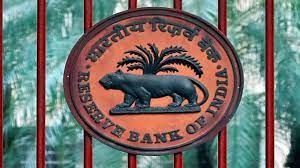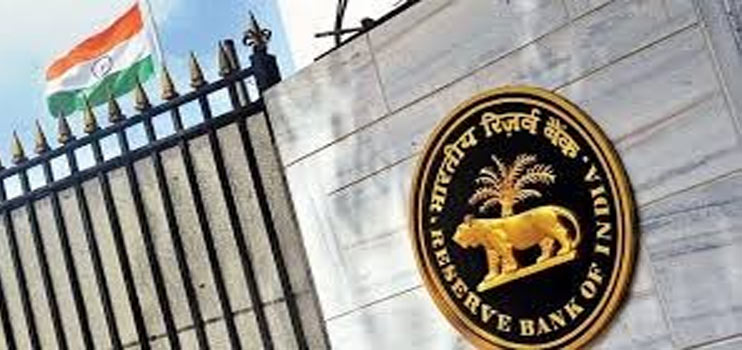If we ask bond dealers what’s at the top of their mind today, nine out of 10 will say the Reserve Bank of India’s (RBI’s) sale of government securities through open market operation (OMO). When will it start?
The RBI announced the plan of OMO sales to manage liquidity in the last monetary policy. “The timing and quantum of such operations will depend on the evolving liquidity conditions.” In September, the RBI sold bonds worth a few thousand crores through screen-based trading in the secondary market. The planned OMO sale will be through auctions.
OMO is a liquidity management tool. When the banking regulator buys bonds through this route, it infuses durable liquidity in the system as the banks get money, selling bonds from their investment portfolio. Similarly, when the RBI sells bonds through OMO auctions, it sucks out money.
However, unlike cash reserve ratio (CRR) — the money that commercial banks need to keep with the central bank on which they don’t earn any interest — which tightens liquidity, OMO, as a tool, has at least a three-fold impact.
(CRR is now 4.5 per cent of the bank’s net demand and time liabilities [NDTL], a loose proxy for deposits. On top of the existing 4.5 per cent CRR, the RBI had asked the banks to maintain an incremental 10 per cent CRR on the increase in NDTL between May 19 and July 28. It was an extremely short-term measure, which absorbed around Rs1.1 trillion. The RBI released the money in phases between September 9 and October 7.)
Draining liquidity from the system or infusing liquidity is just one of the three purposes that OMO serves. It is also a yield-management tool. When bonds are sold through OMOs, in addition to the regular auctions for government securities in accordance with the borrowing calendar, it increases the supply of bonds in the market. As a result of this, it can push the bond yield up.
The 10-year yield is hovering around 7.36 per cent now, after hitting a high of 7.395 per cent on October 9, post-OMO sale announcement in the monetary policy on October 6. Its lowest level during the current financial year is 6.945 per cent on May 17.
The government’s gross borrowing programme for FY24 is pegged at a record Rs15.43 trillion. Out of this, 55.57 per cent or Rs8.88 trillion was borrowed in the first half till September. In the second half, so far, Rs94,000 crore has been raised. Incidentally, bonds worth Rs2.81 trillion will be redeemed between November and January 2024. This will add liquidity to the system. Will the RBI time the first round of OMO auction with this?
When the RBI announced the plan to sell bonds through OMO in the last policy, the 10-year bond yield jumped 12 basis points (bps) — from 7.23 per cent to 7.35 per cent. One bp is a hundredth of a percentage point. Yield and prices of a bond move in opposite directions.
Historically, it has been used both to harden the yield as well as bring it down. For instance, when Y V Reddy was RBI governor, the regulator announced a small amount of OMO sale in 2005 to send a signal to the market about the likely direction of bond yield. The OMO sale for a small amount was done offering about 20 bps higher yield — a big jump those days when bond yield used to move only a few bps in months. It was the beginning of a change in the rate cycle, which saw the yield settling at around 3.5 percentage points higher than the prevalent level, over a period of time.
By the end of March 2012, another governor, D Subbarao, used it to bring down the bond yield. On March 29, 2012, the RBI announced buying Rs10,000 crore worth of bonds through OMO ahead of the first tranche of a Rs18,000-crore central government security auction on April 3. The next day, the yield on the benchmark 10-year paper dropped from 8.59 per cent to 8.54 per cent. Had there been no OMO announcement, the yield would have shot up.
Indeed, by the time the first auction of the year was held on April 3, the yield rose to 8.76 per cent but the OMO auction protected commercial banks from the so-called mark-to-market or MTM losses in their bond portfolio. MTM is an accounting practice of valuing the bonds by the end of every quarter in a financial year at the prevalent market price and not the price at which it is bought.
When the yield of a bond rises, its price falls, and banks need to make good the erosion in value by setting aside money. By announcing OMO, the RBI had artificially suppressed the price of bonds on the last day of March, bringing down the banks’ provision requirement, which would have affected their profits.
(Incidentally, from the next financial year, the cap on the held-to-maturity or HTM basket of banks’ investment portfolio — which is not subject to price fluctuations — is being removed. This means, if a bank keeps its entire investment portfolio in this basket, it will not have to book any MTM loss.)
The third objective an OMO sale could achieve is addressing the slippage in local currency. The rupee closed at 83.28 a dollar on October 16, its lowest closing level, and just shy of its all-time intraday low 83.29 a dollar, seen in October 2022. (Last Friday, it closed at 83.12 a dollar.) India’s foreign exchange reserves have declined by around $15.3 billion in six weeks since September. Apart from the RBI’s dollar sale, the erosion in the value of rupee vis-à-vis dollar and the appreciation of the greenback against other currencies in the reserves contributed to the drop.
If the OMO sale pushes up the government bond yield, the spread between US and Indian bond yields will widen. It has been shrinking. With the US 10-year paper yield inching towards 5 per cent last week, the highest since July 2007, the spread has shrunk to 2.41 percentage points, a level last seen in April 2006.
The lowest ever spread between US and Indian 10 government bonds is 0.61 percentage points, recorded in 2004. In the past two and a half decades, the average spread has been 4.64 percentage points and the highest, 6.94 percentage points, was recorded on May 31, 2012 (1.56 per cent US 10-year yield vs 8.5 per cent Indian 10-year bond yield).
As the spread or the difference between the Indian and US bond yields shrinks, foreign money flow into India slows down; the investors find US bonds more attractive and, consequently, the local currency comes under pressure. The OMO sale will address the rupee depreciation against the dollar.
Time and again, RBI Governor Shaktikanta Das has reiterated that the Indian central bank wants to bottle the inflation genie at 4 per cent for good and not 6 per cent — the upper limit of the inflation target. Lower liquidity, higher bond yield and improved capital flows will help the rupee as well as fight against inflation.
While liquidity absorption is the underlying theme of the current RBI policy, which has its stance rooted in “withdrawal of accommodation” as far as the currency is concerned, the RBI has three options before it. One, allowing the rupee to weaken; two, selling dollars which will erode the foreign exchange reserves ($585.895 billion as on October 13); and three, allowing the bond yield to rise to protect the rupee depreciation.
Incidentally, the rupee has done better than its emerging market peers so far this year. In the first quarter of FY23, it appreciated marginally against the dollar (0.2 per cent) before depreciating 1.2 per cent in the second quarter.
A recent Bloomberg report says the triumvirate of high oil prices, a surging dollar and geopolitical instability are set to weigh on India and Indonesia, among Asia’s emerging markets. The OMO sale could be an innovative way to address the concerns on currency.
This column first appeared in Business Standard.
The writer, a Senior Adviser to Jana Small Finance Bank, writes Banker’s Trust every Monday in Business Standard.
Latest book Roller Coaster: An Affair with Banking
Twitter: TamalBandyo
Website: https://bankerstrust.in



